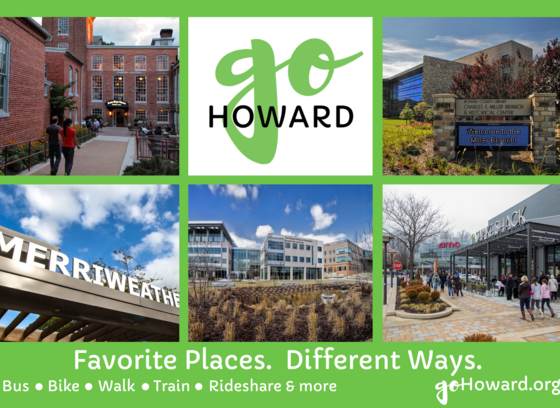What is Transportation Demand Management?
Transportation Demand Management (TDM) is moving people, not vehicles, creating a more efficient use of our roadways. This results in less traffic congestion, better air quality, and even happier, healthier communities. Products and services include encouragement to use alternatives to the single-occupant (SOV) such as ridesharing (carpools and vanpools), taking transit, riding bikes, and walking.
Alternatives to commuting such as compressed work weeks, flextime, and telecommuting, as well as parking management tactics such as preferential parking for carpools and parking pricing are also effective TDM strategies.
Howard County’s TDM Program is Go Howard, formerly Howard Commuter Solutions, offering assistance to employers, employees, and residents about the many different ways to get to your favorite places.

In partnership with the Downtown Columbia Partnership and Foursquare ITP, Howard County is developing a Transportation Demand Management Plan for Downtown Columbia.
The purpose of this plan is to identify strategies that reduce the number of trips made, move more people in the same amount of roadway space, and spread the travel demand across more hours of the day to take advantage of space and capacity. The focus of this plan is on the implementation of these strategies that the level of individual office, apartments and condominiums, institutional, and retail buildings.
As a part of this plan we’re exploring different strategies and benefits that include things like pre-tax or subsidies for taking public transit, real-time information bus arrivals, shuttles to/from transit and other key locations, carpool and vanpool programs, reduced-price bikeshare memberships, increased opportunities for telework and alternative work schedules and more.
As a condition of its development, Maple Lawn is required to develop Transportation Demand Management practices for use in both the residential and commercial areas of the community.